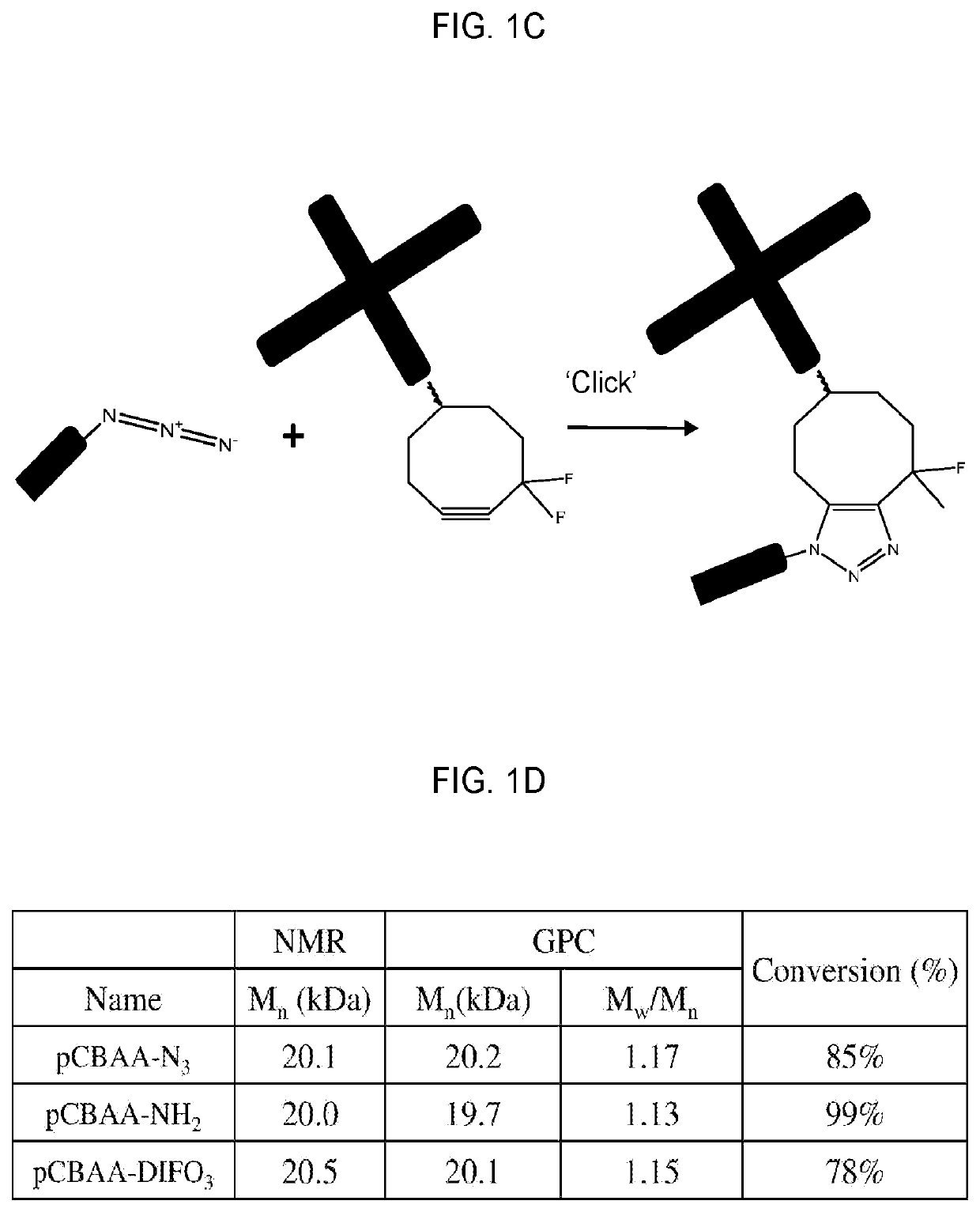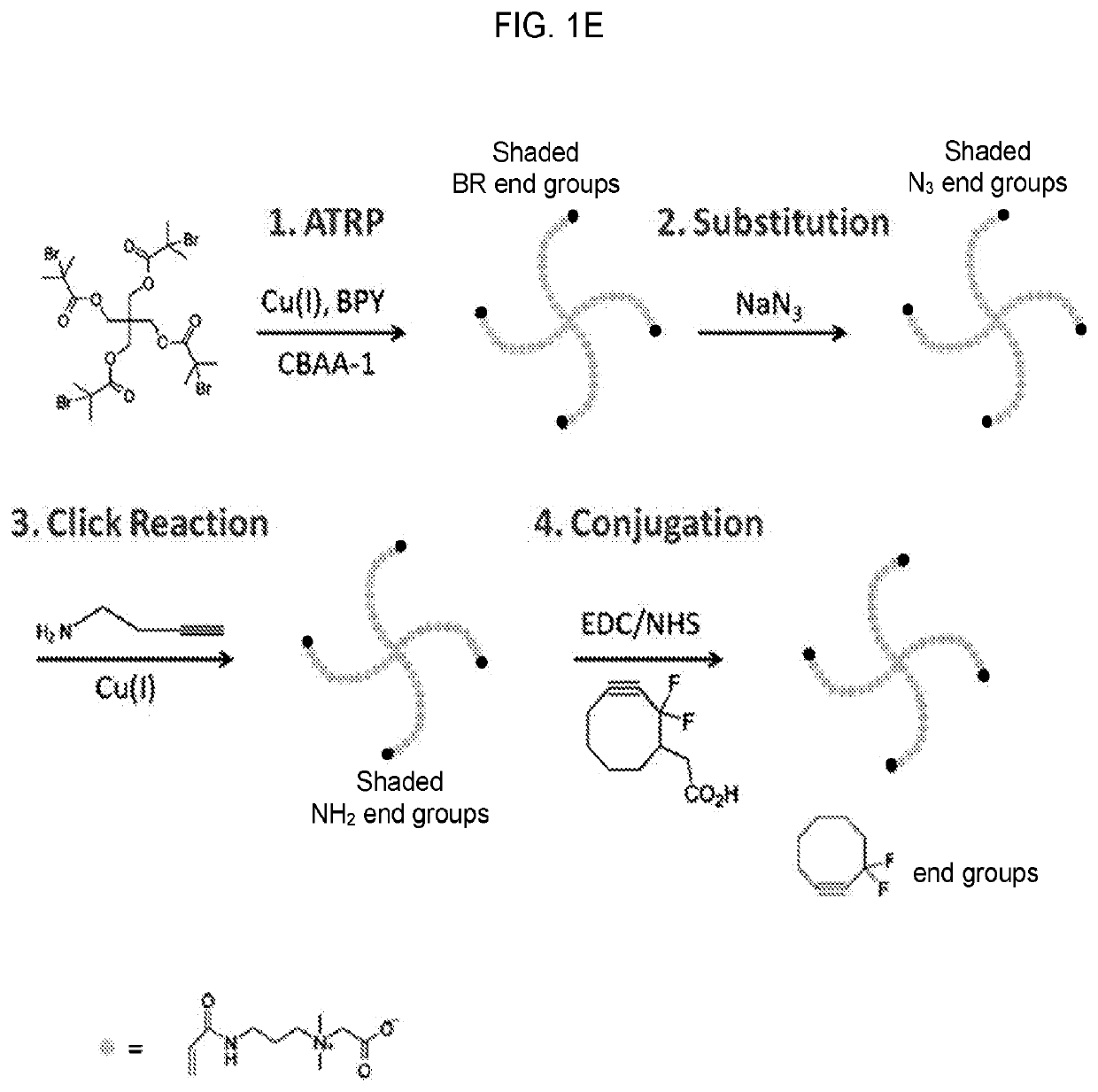Systems and methods for hematopoietic cell expansion utilizing hydrogels
a technology of hematopoietic cells and hydrogels, which is applied in the direction of drug compositions, extracellular fluid disorders, genetically modified cells, etc., can solve the problems of limiting the more widespread use of stem cells, hsc differentiation into progenitor cells, and high risk of graft failure and early transplant-related mortality, so as to reduce metabolic rates and cell surface expression levels of differentiation/maturation markers. , the effect of reducing the risk o
- Summary
- Abstract
- Description
- Claims
- Application Information
AI Technical Summary
Benefits of technology
Problems solved by technology
Method used
Image
Examples
embodiment 1
2. A method of embodiment 1 wherein the hydrogel is an ultra-low fouling hydrogel.
3. A method of embodiment 1 or 2 wherein the hydrogel is a zwitterionic hydrogel (ZTG).
4. A method of any of embodiments 1-3, wherein at least of a portion of the CD34+ hematopoietic cells within the population are genetically-modified, for example to express a therapeutic gene and / or gene product listed in embodiment 140.
5. A method of any of embodiments 3-5, wherein the final expanded CD34+ hematopoietic cell population is a ZTG-expanded HSC population.
6. A method of any of embodiments 1-5, wherein the hydrogel has a kPa of at least 0.7.
7. A method of any of embodiments 1-5, wherein the hydrogel has a kPA of 0.7-5.
8. A method of any of embodiments 1-7, wherein the initial cell seeding density is 800,000-2 million cells / ml.
9. A method of any of embodiments 1-8, wherein the initial cell seeding density is 1.2 million cells / ml.
10. A method of any of embodiments 1-9, wherein the period is 6-20 days.
11. A...
embodiment 19
20. A method of embodiment 19, wherein the reduced metabolic rates are demonstrated through a reduction in (i) glucose consumption; (ii) lactate secretion; and / or (iii) amino acid metabolism.
21. A method of any of embodiments 1-20, wherein the expanding cell population has decreased production of reactive oxygen species (ROS), as compared to a CD34+ hematopoietic cell population expanding under a relevant control condition.
22. A method of any of embodiments 1-21, wherein the final expanded CD34+ hematopoietic cell population has decreased mitochondrial mass and / or mitochondrial membrane potential, as compared to a CD34+ hematopoietic cell population expanded under a relevant control condition.
23. A method of any of embodiments 1-22, wherein the incorporating results in at least 10-fold expansion, at least 50-fold expansion, at least 100-fold expansion, at least 500-fold expansion, at least 600-fold expansion, at least 700-fold expansion, at least 800-fold expansion, at least 900-fol...
embodiment 24
25. A method of embodiment 24, wherein the zwitterionic polymer includes a four-arm poly(carboxybetaine acrylamide) tetracyclooctyne.
26. A method of any of embodiments 1-25, wherein the hydrogel includes a poly(EK) crosslinker.
PUM
| Property | Measurement | Unit |
|---|---|---|
| time | aaaaa | aaaaa |
| time | aaaaa | aaaaa |
| density | aaaaa | aaaaa |
Abstract
Description
Claims
Application Information
 Login to View More
Login to View More - R&D
- Intellectual Property
- Life Sciences
- Materials
- Tech Scout
- Unparalleled Data Quality
- Higher Quality Content
- 60% Fewer Hallucinations
Browse by: Latest US Patents, China's latest patents, Technical Efficacy Thesaurus, Application Domain, Technology Topic, Popular Technical Reports.
© 2025 PatSnap. All rights reserved.Legal|Privacy policy|Modern Slavery Act Transparency Statement|Sitemap|About US| Contact US: help@patsnap.com



